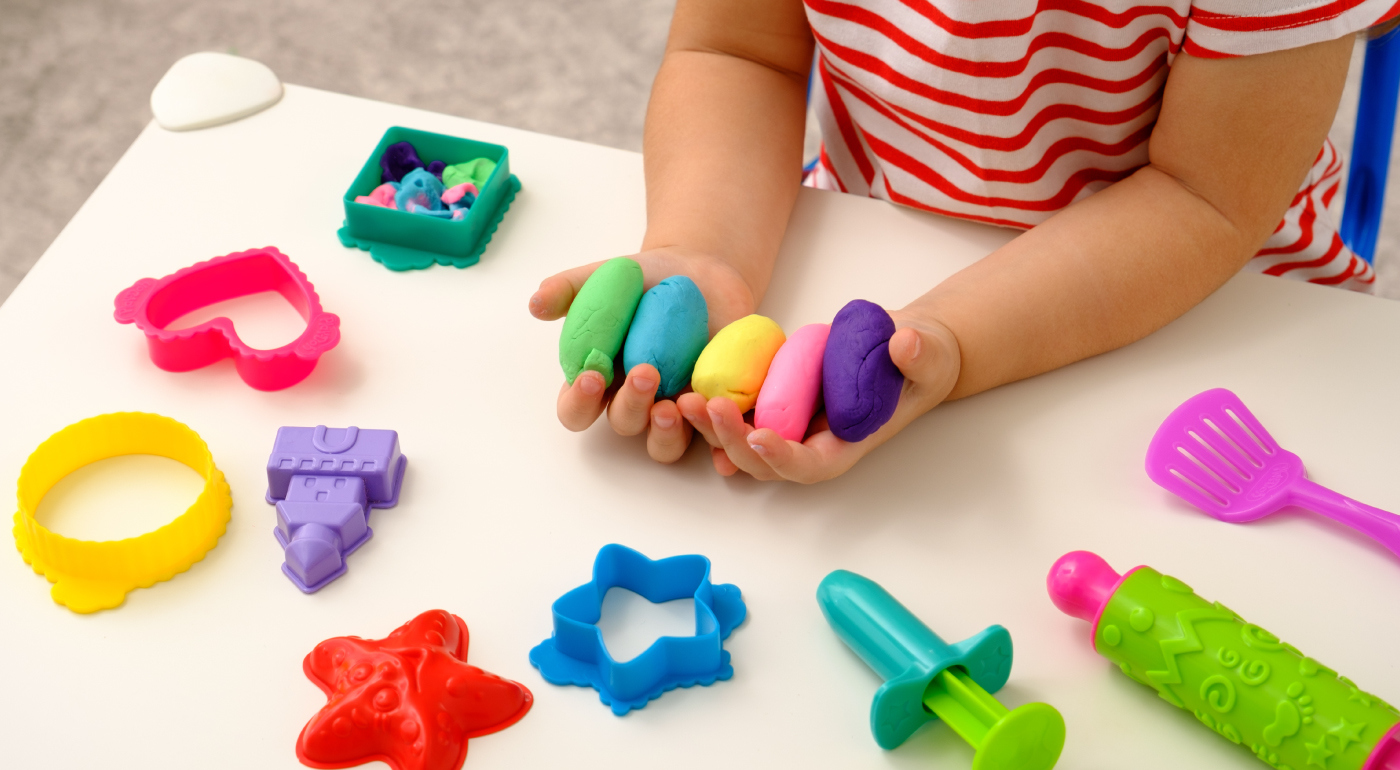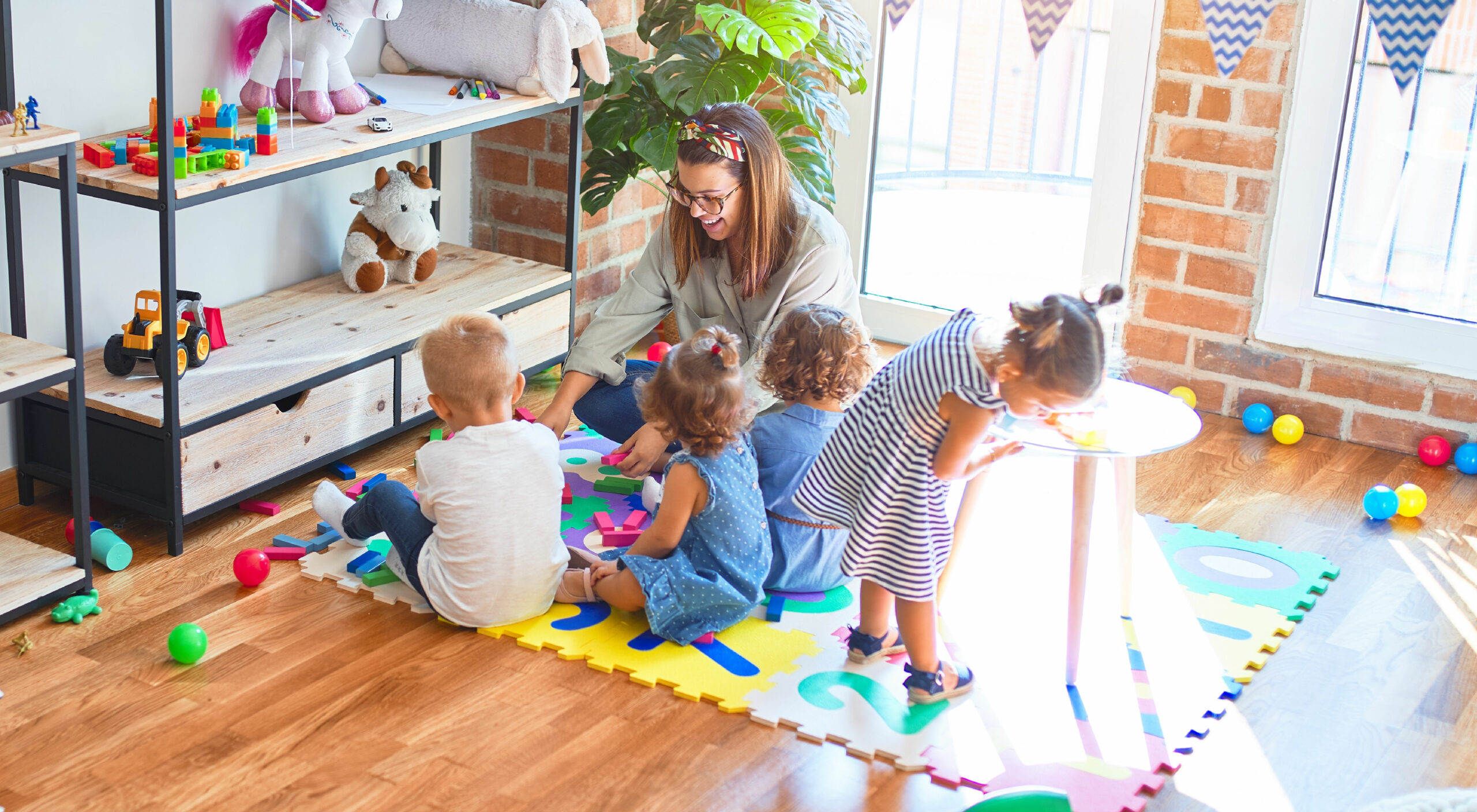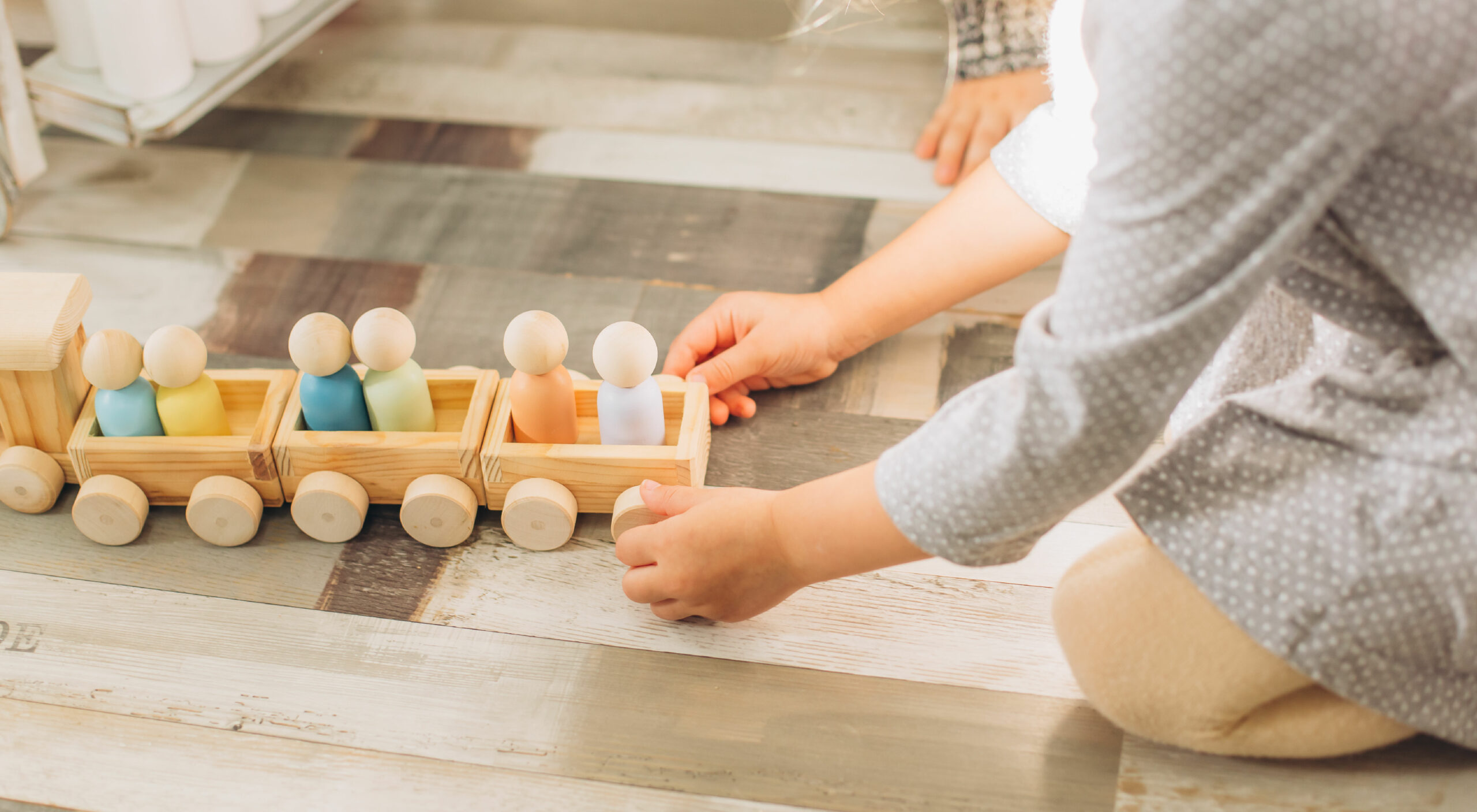Did you know that the average American household has 71 toys at any given time? No matter how many children you may have, that’s a lot of toys! It’s especially a lot when you think about how quickly children grow tired of toys. In the Montessori world, less is more when it comes to most things, and toys are no exception. Rather than offering a free-for-all with toys, the Montessori Method focuses on intentional toys that have very specific developmental and cognitive purposes.
Keep reading to learn more about age-appropriate Montessori toys and how they foster learning—whether at home, school, or anywhere else. We’ve included links to make finding these toys easy, but there is a wide variety of Montessori toys available online. Use our suggestions as a starting place, but be sure to find toys you love. (Lovevery and Tiny Earth Toys are two great places to find Montessori toys. They have toys for all ages.)
Before we jump in, we want to encourage you to use these suggestions as a guide. Every child is different, so there is no black and white schedule for Montessori toys. We’ve categorized the toys below by age, but don’t feel like you need to introduce a certain toy at a certain time. Follow your child’s lead. After all, you know them better than anyone else!
Montessori Toys for Infants
Toys for infants? Yes! While infants are still in the earliest stages of development, with a long way to grow, they can still benefit from play. Infant Montessori toys will change as your little one grows, but many of these beginning toys can be used for years to come.
0-6 Months
Newborns can play, too, especially after the first couple of months. Once your little one starts grasping things, you can introduce simple toys like a wooden rattle or a soft Montessori ball. These objects encourage infants to explore with their hands. Rattles also introduce the concept of cause and effect; before long, your little one will begin to realize that a certain sound is coming from the rattle.
6-12 Months
As your baby grows, introduce more complex toys, such as object permanence boxes. This classic toy strengthens fine motor skills and teaches the concept that an object still exists even if it’s not in view. Nesting boxes are another Montessori favorite—they help with hand-eye coordination and bilateral coordination. Ring stackers are also great for this age. Start with one or two rings, and then add more rings as your baby begins to understand how the activity works.
12-18 Months
Your little one isn’t so little anymore! Children this age can interact with small board books, and they’ll have a blast with a Pikler arch or Pikler triangle (or a set that includes both). Both of these climbing toys promote gross motor skills, balance, and confidence. They also provide a controlled environment for children to explore risk taking. Lacing sets strengthen toddlers’ pincer grasp, which helps them hold something between their thumb and index finger.
Montessori Toys for Toddlers (18 months – 2 years)
At this stage, your child is probably on the move a lot. A balance board is a fun activity that improves balance and coordination. Balance boards come with a variety of curves; at this age, you’ll want to choose one with a gentle curve. As your child’s balance improves, you can introduce a more difficult curve. When turned over, balance boards can double as the perfect child-sized seat. Once they’re done playing, all they need is their favorite blanket and a book to curl up with!
Object puzzles and matching games teach toddlers problem solving skills. They also teach children new concepts like shapes, letters, animals, and more, depending on the subject of the puzzle or game.
Montessori Toys for Preschoolers (2 – 4 years)
At this age, your child will likely still enjoy many of the Montessori toys we’ve mentioned in previous sections. Let them enjoy those toys for as long as they want! In addition, now is a great time to introduce toys that encourage pretend play. Dolls, play kitchens, tea sets, picnic sets, and wooden trains are just a few items that do just that. If your child begins learning to write letters during this period, sand trays and tracing boards can help build those skills.
Whether or not your family follows the Montessori Method, there are a lot of benefits to the Montessori approach to play and toys. A few things you won’t see in Montessori toys are batteries, artificial noise, or plastic. This intentional design is meant to avoid overwhelming and overstimulating your child. Like we said before, less is best.
If you’re ready to simplify your playroom and declutter a little bit, donate the dusty toys on the shelf to a local thrift store and replace them with some of the Montessori toys highlighted above. Believe it or not, playtime can be just as fun (if not more) without 71 toys!



